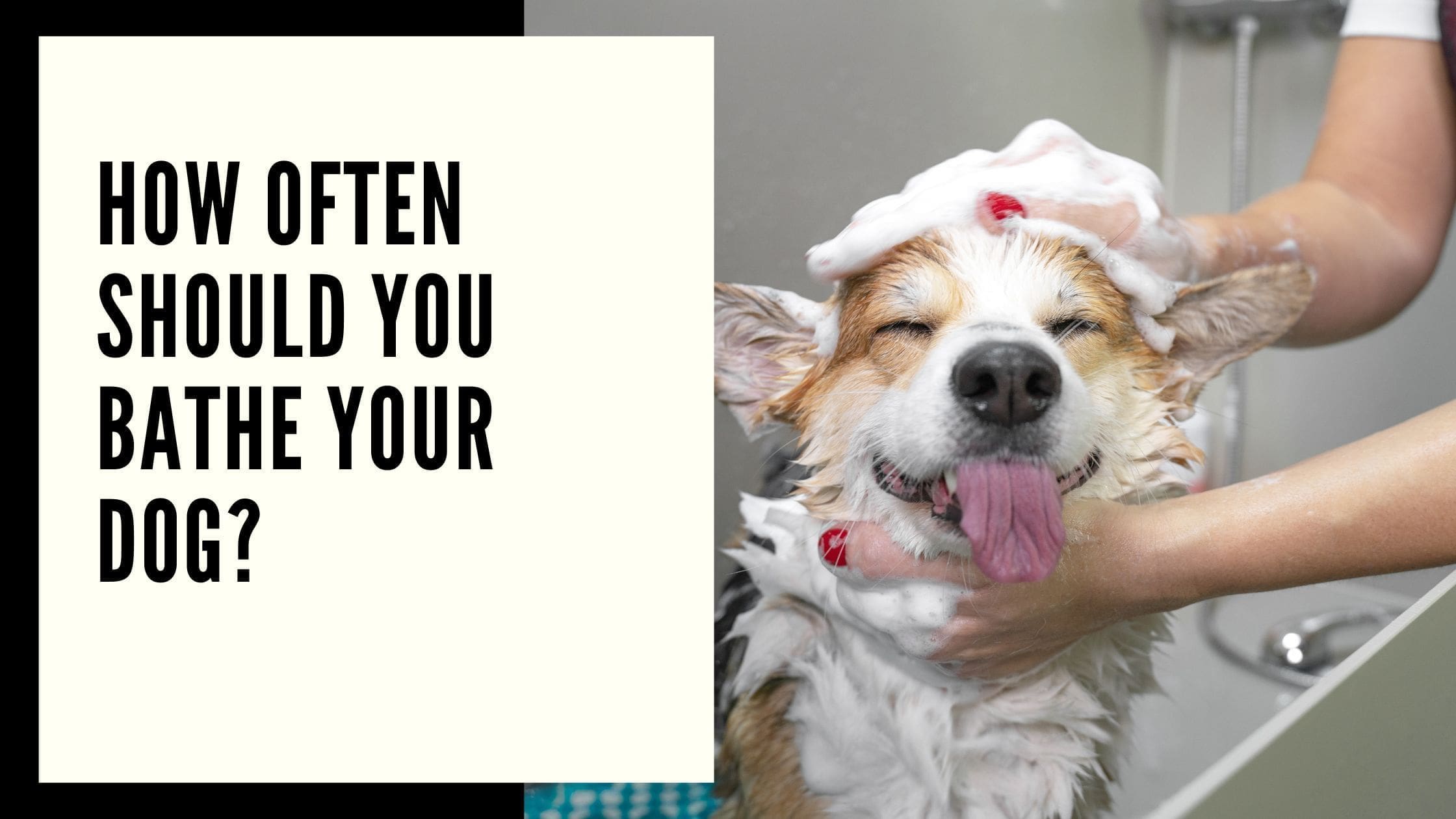How Often Should You Bathe Your Dog?
Bathing your furry companion is an essential aspect of canine care. It not only keeps them clean but also contributes to their overall health and well-being. However, the frequency of baths for your dog can vary depending on several factors. In this comprehensive guide, we’ll delve into the considerations that dictate how often you should bathe your dog.
Understanding Your Dog’s Coat Type
One of the primary factors that influence the frequency of baths is your dog’s coat type. Different coat types require varying levels of maintenance.
- Short-Haired Dogs : Breeds like Dachshunds or Boxers typically have short, smooth coats that don’t trap as much dirt. They generally require bathing every 2-3 months.
- Medium-Haired Dogs: Breeds such as Bulldogs or Beagles have medium-length coats that may require bathing every 4-6 weeks to keep them clean and healthy.
- Long-Haired Dogs: Breeds like Collies or Shih Tzus have long, flowing coats that are prone to matting. These dogs may need a bath every 3-4 weeks.
Activity Level and Lifestyle
A dog’s activity level and lifestyle play a significant role in determining bathing frequency.
- Active Dogs : Dogs that love to run and play outdoors tend to get dirtier quickly. Bathing once a month may be necessary.
- Indoor Dogs : Dogs that spend most of their time indoors may require baths less frequently, perhaps every 2-3 months.
Skin and Health Conditions
Some dogs may have specific skin or health conditions that require regular bathing as part of their treatment.
- Allergies: Dogs with allergies may benefit from weekly baths to remove allergens from their fur and skin.
- Skin Infections: If your dog has a skin infection, your veterinarian may recommend a specific bathing schedule to treat the condition.
Behavioral Factors
Behavioral factors can also influence the need for baths.
- Rolling in Unpleasant Substances: If your dog has a penchant for rolling in things like mud or foul-smelling objects, you may need to bathe them more frequently.
- Odor : If your dog develops a noticeable odor between baths, it’s a sign that it’s time for another bath.
How to Bathe Your Dog
Now that we’ve established the factors that affect bathing frequency, let’s discuss how to give your furry friend a proper bath.
Gather Supplies
Before starting, gather all the necessary supplies: dog shampoo, towels, a brush, a non-slip mat if you’re bathing your dog indoors, and perhaps some treats for positive reinforcement.
Prepare Your Dog
Brush your dog’s coat to remove any tangles or mats before getting them wet. This helps prevent further matting during the bath. Make sure your dog is comfortable and calm before proceeding.
Use Lukewarm Water
Ensure the water is comfortably warm, and use a handheld sprayer or a large cup to wet your dog’s coat thoroughly. Be gentle and reassuring during this process, especially if your dog is not accustomed to baths.
Apply Dog Shampoo
Use a dog-specific shampoo and lather it gently into your dog’s fur, avoiding the eyes and ears. Be sure to get all areas, including under the belly and between the toes. If your dog has any specific skin issues, consult your veterinarian for a suitable shampoo.
Rinse Thoroughly
Rinse your dog thoroughly, ensuring that no shampoo residue remains. Leftover shampoo can cause skin irritation.
Dry Your Dog
After the bath, dry your dog with a towel and let them shake off any excess water. You can also use a hairdryer on a low, cool setting, but be cautious and keep it at a safe distance to avoid burning your dog’s skin.
Post-Bath Reward
After the bath, reward your dog with a treat and some playtime to create positive associations with the bathing experience.
Conclusion
Dog bathing is an important part of their care routine. The frequency of baths depends on various factors, including your dog’s coat type, activity level, and health conditions. By understanding these factors and following proper bathing techniques, you can ensure that your canine companion stays clean and healthy, both in body and mind.
FAQs
1. Can I use human shampoo on my dog?
It’s best to use a dog-specific shampoo, as human shampoos can irritate a dog’s skin. Always choose a gentle, hypoallergenic option.
2. How can I prevent my dog from rolling in unpleasant substances?
Training and supervision can help deter this behavior. Keep a watchful eye on your dog during outdoor activities, and consider using a long leash or harness in areas where they’re likely to encounter tempting smells.
3. What if my dog hates baths?
Gradual desensitization, treats, and positive reinforcement can help make bath time a more enjoyable experience for your dog. Consult with a professional dog trainer if needed.
4. Are there any breeds that should not be bathed frequently?
Breeds with water-repellent coats, like Labradors, may need fewer baths to maintain their coat’s natural oils. However, individual needs may vary, so monitor your dog’s coat condition.
5. Can over-bathing harm my dog’s skin?
Yes, excessive bathing can strip the natural oils from your dog’s skin, leading to dryness and irritation. Follow the recommended bathing frequency for your dog’s specific needs, and consult your veterinarian if you’re unsure about the appropriate schedule for your furry friend.
